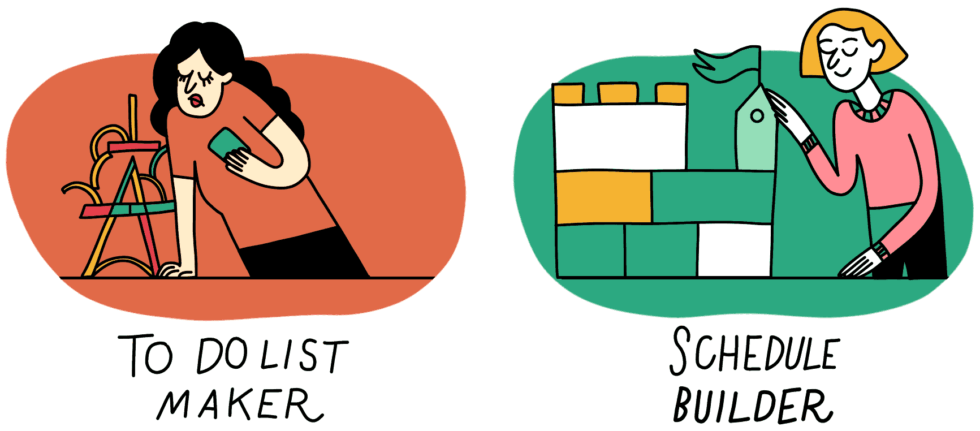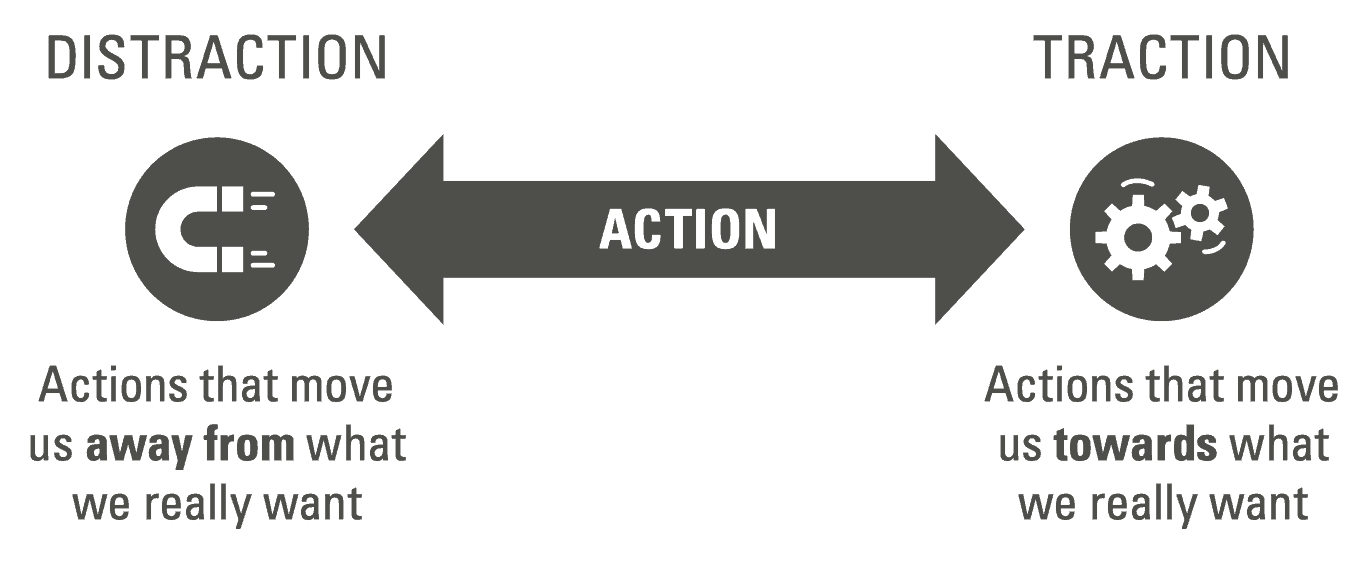Imagine you bought a new phone, but at the end of each day, every day, the operating system crashed. Would you keep using the faulty phone? Of course not. You’d take it back to the store, complain, and get a new one.
And yet, many people run their entire lives on a faulty operating system. It’s called the to-do list. Have you ever met someone who runs their day using a to-do list and actually finishes everything they said they’d do? Me neither.
To-do list devotees keep a running register of all the things they promise to get done, but at the end of the day, they’re surprised to find the list of uncompleted tasks has gotten longer, not shorter. The next day, they repeat the Sisyphean practice. Their days, months, and sometimes entire careers are spent in a harried blur of never getting enough done, even though they’re using a technique that’s supposed to make them more productive.
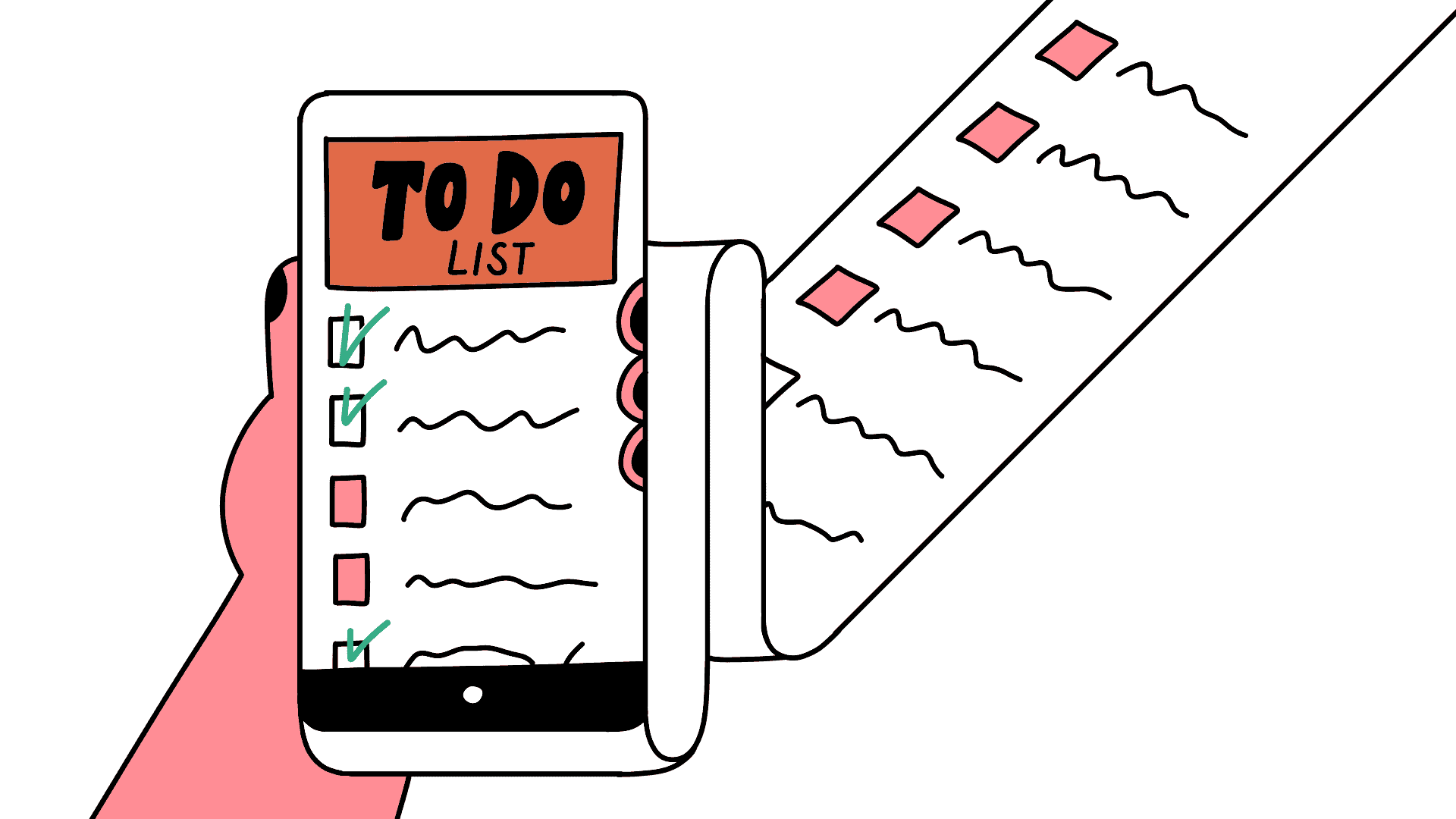
It’s time to shed the constant stress and toxic guilt of not checking off enough little boxes and finally understanding why running your life with a to-do list is like running your life on Windows 95.
Ultimately, you’ll find that using a schedule maker to make a weekly timeboxed calendar instead of relying on a to-do list is the right way to go, but before we get into that, let’s discuss what’s wrong with to-do lists:
Don’t get me wrong—time management practices, like any tool, aren’t inherently harmful or helpful; it comes down to how they’re used. A hammer can be used to build a house or bash someone’s head. When it comes to using to-do lists, getting tasks onto a piece of paper, or into an app, is a very good thing. I do this all the time. No problem there.
What I argue against is the way many people run their lives with a to-do list, as I did for decades. Every morning, when I’d start my work day, the first place I’d look was my to-do list. I’d start checking off boxes, unaware that I was using the tool all wrong. It’s a broken operating system, and I’m glad I’ve updated it. Here’s why.
To-Do Lists Perpetuate Harmful Self-Stereotypes
Ever notice how much easier it is to add things to your to-do list than to actually do them? With no constraints, we just fill up our to-do lists with even more things we’ll never finish.
Back when I was letting to-do lists run my day, I’d blame myself for not finishing tasks. I used to think there must be something wrong with me, or with my inability to follow through. I didn’t realize this negative self-talk reinforced a kind of stereotype that made me less likely to accomplish my goals.
As I described in my book Indistractable, several studies have found that behavior change requires identity change. That is, long-term adherence to a new set of actions necessitates seeing ourselves differently.
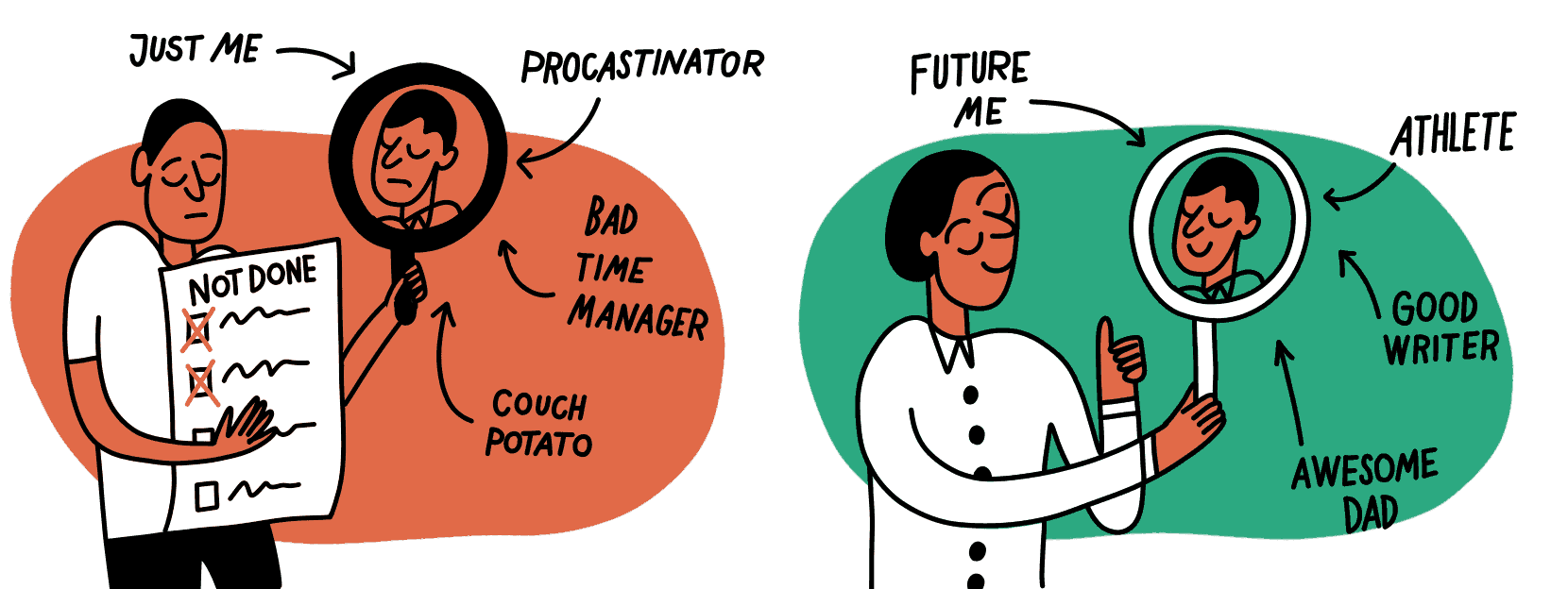
If you want to get in shape, you can’t give up one month after setting a New Year’s resolution. You must see yourself as an athlete, so you can commit to exercising for the rest of your life. If you want to effect social change, don’t just vote; be a voter. If you want to stop procrastinating and you find yourself frequently distracted, don’t make promises to yourself you’ll later break; be indistractable.
The difference may seem minor, but several studies have shown we tend to conform to our self-image; identity precedes behavior.
What kind of identity does an ever-incomplete to-do list reinforce? Though there haven’t been direct studies, one can infer from existing research that it isn’t a positive one. Having a constant reminder that you didn’t do what you said you’d do cements a self-stereotype. We begin to see ourselves differently. Day after day, week after week, year after year, the fact that we don’t do as we say takes a toll.
Eventually, we begrudgingly accept not following through.
“I’ll finish it tomorrow,” we tell ourselves. “What’s one more day?”
We repeat this cycle until eventually, and subconsciously, the narrative begins to change from what we do to who we are.
“I’m not good with deadlines,” we say. “I must have a short attention span.”
Faced with the constant dissonance between what we’ve promised to do and what we actually accomplish, we begin to see ourselves as the problem. We stop asking whether our time management system is no good and start to believe, “Maybe I am no good.”
We buy into a self-fulfilling prophecy. This happened to me: I allowed myself to believe I was the kind of person who was “easily distracted,” and I therefore became increasingly distractible. I started telling myself I was “bad at managing my time” and began acting accordingly.
Unfortunately, when we look around and see the endless to-do list apps and productivity “life hacks” telling us to just write things down to get things done, it’s no wonder we think we are the problem. But it’s not you or me that’s “broken.” Rather, it’s the to-do list methodology that’s screwed up.
To-Do Lists Lead to Distraction?
To-do lists are supposed to keep us on task. They don’t. Rather, running your life using a to-do list leads to more distraction, not less. To understand why, it’s important to understand what “distraction” is—really.
A distraction is any action that pulls us away from what we intend to do. The opposite of distraction is not “focus.” It’s “traction.” Both words come from the same Latin root trahere, which means “to pull.” Both words also end with the same six-letter word, “action,” reminding us that both “traction” and “dis-traction” are actions we decide to take, not things that randomly happen to us.
Understanding the distinction between traction and distraction is critical. By this definition, we cannot call something a distraction unless we know what it is distracting us from. Therefore, we can’t say we got distracted unless we have defined, in advance, what is traction for us at that moment in time.
Whether something is a distraction or traction has little to do with the activity itself. Rather, it is forethought that differentiates the two.
Playing video games or watching television can be an act of traction if that’s what you planned to do with your time. Conversely, working on a task most people would laud as “productive” can be a horrible distraction if it is not what you committed to doing with your time.
When I used a to-do list to run my day, I’d start the morning ticking off tasks, thinking I was on point. I didn’t realize I was letting my to-do list lead me towards distractions that were preventing me from reaching my goals.
For instance, even when I knew I had a big project looming and needed to spend the morning working on it to meet my deadline, glancing at my to-do list gave me permission to escape into doing something (anything) else.
Oh! My to-do list says it’s time to rearrange my desktop icons into color-coded, alphabetized folders!? OK! I guess I’ll do that real quick before I start writing that report I’ve been putting off.
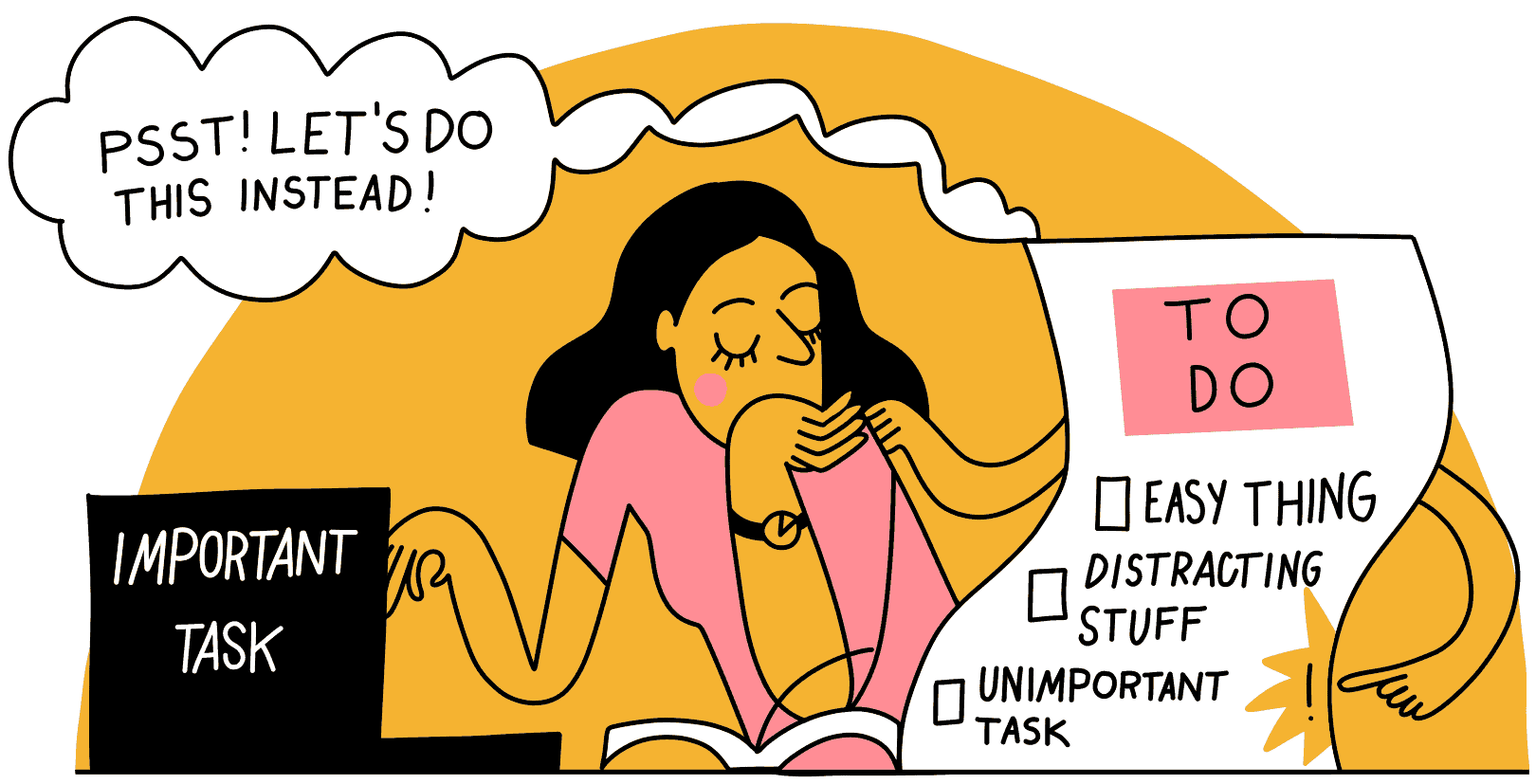
To-do lists allow us to get distracted by the easy or urgent tasks at the expense of the important work. We get pulled off track by the most pernicious form of distraction—the kind we succumb to without realizing it’s happening. We run faster and faster in the name of getting things done, without realizing we’re headed in the wrong direction.
When we realize we didn’t allocate the necessary time to work on the most important tasks, we justify it by telling ourselves, “there isn’t enough time left anyway,” or “I’m not in the mood,” and with a few clicks, we make the hard work disappear by pushing it off to the next day or the next.
“I’ll definitely get to it tomorrow,” we tell ourselves. But of course, with the rotten to-do list system unchanged, we repeat the same hopeless steps the next day.
Not until the deadline looms over us do we realize we could have done better work and would have avoided this crushing stress, if only we’d dedicated ourselves to the important project when we said we would. Instead, we allowed the to-do list to distract us with frivolous tasks that gave us the deceptive feeling of being productive when we didn’t feel like doing what we said we would.
To-Do Lists Destroy the Fun in Life
Finally, and perhaps most annoyingly, there’s what to-do lists do to our leisure time. I call this phenomenon the “tyranny of the to-do list.”
A tyrant is a “cruel and oppressive ruler.” Tyrants make subjects do things against their will and strike fear into people’s hearts. Okay, maybe I’m exaggerating for dramatic effect—no one was beheaded for defying their to-do list. However, to-do lists make us lose our heads in other ways. Namely, they occupy our minds like a hostile army, stressing us out and sapping enjoyment from life.
Before I staged a coup d’etat against my to-do list, I used to let my unfinished tasks invade my thoughts and leisure time. I’d sit down for a pleasant dinner with my family, only to start thinking about all the things left undone on my to-do list. Later, when I’d play with my daughter, the unchecked boxes tormented me and sometimes kept me up at night worrying.
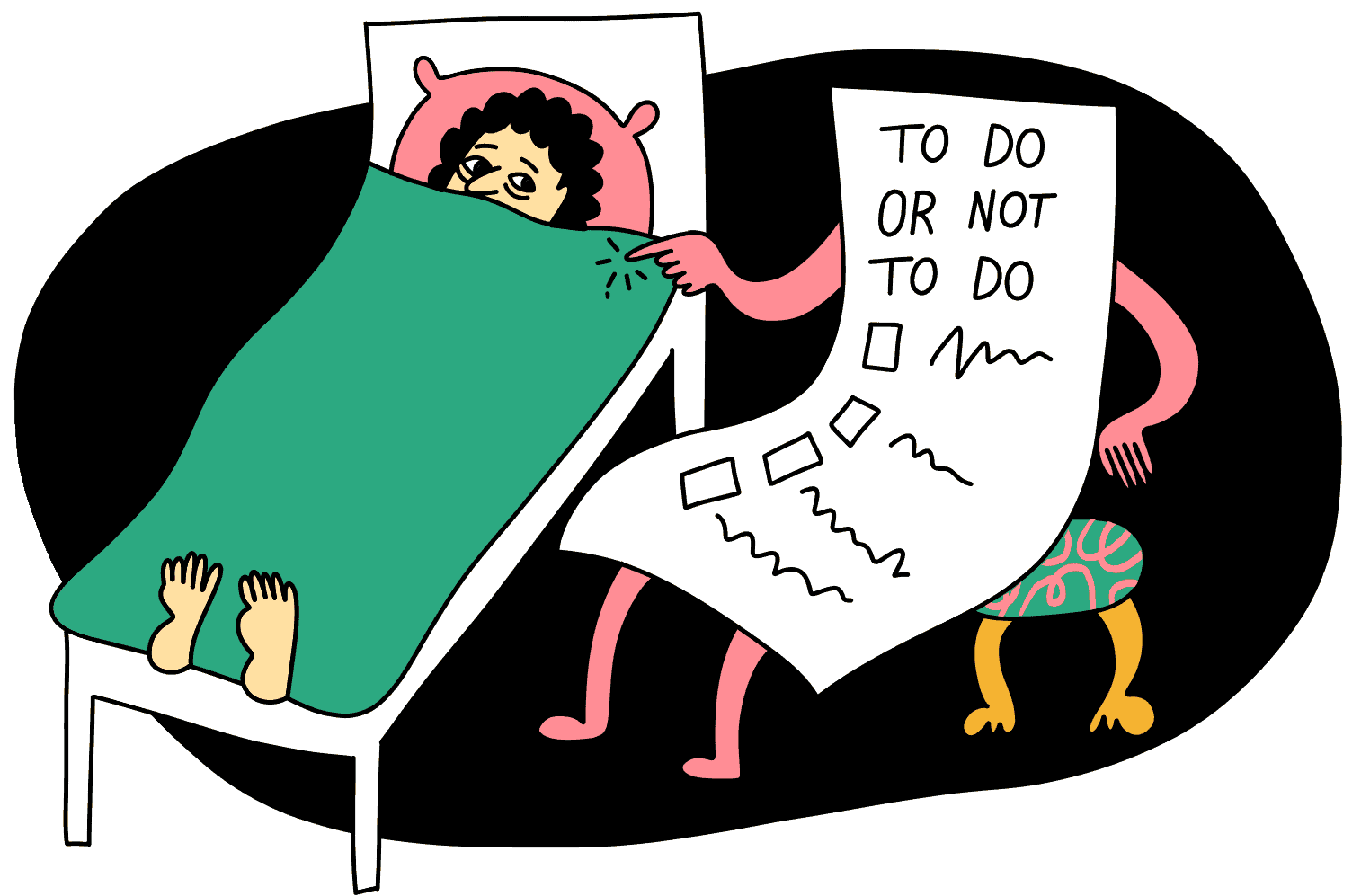
A recent study found that intrusive thought, including thinking about what we “should” be doing, can kill the enjoyment of life’s most important pleasures. The tyranny of the to-do list comes not only from its power to waste our time while working, but also its ability to take over our minds while we’re trying to actually have a life.
Time studies show Americans far underestimate how much leisure time they have. Both mothers and fathers in several Western nations spend significantly more time with their children than previous generations. Yet, even though Americans have time to watch on average nearly five hours of television every day, they report feeling busier.
We spend tons of time “relaxing,” and yet, ironically, we feel less relaxed, even when we take a break.
My hunch is that few working professionals today, especially high performers, even remember what leisure time is supposed to feel like. They’ve simply forgotten how wonderful it feels to have the peace of mind of spending time solely focused on their children or taking a walk.
Thankfully, there’s a research-backed way to help you reclaim more joy from every minute of your day.
The Best To-Do List is One you Make with a Schedule Builder
To free yourself from the tyranny of the to-do list, you must break the habit of looking at your list to tell you what to do. So what’s the alternative? It’s time to upgrade your life OS and use a schedule builder instead.
Keeping a schedule seems simple, yet most people don’t do it (or don’t do it correctly). They plop a meeting or two onto their calendar and leave the rest of it blank. A better approach is to use what psychologists call “setting an implementation intention,” a fancy term for deciding what you’re going to do and when you’re going to do it.
Planning in advance how you intend to spend your time is the only way to know the difference between traction (what you said you would do) and distraction (anything else).
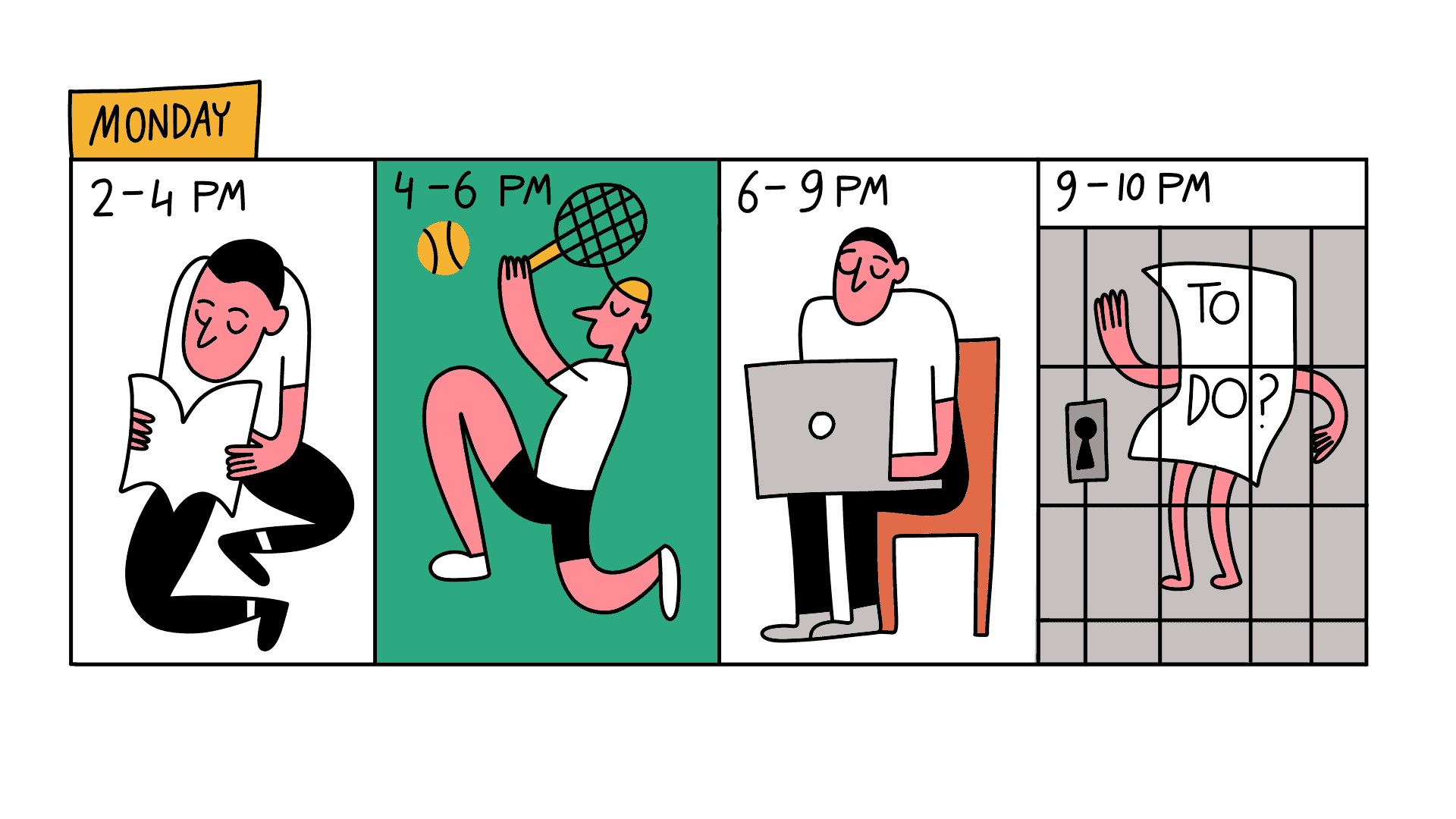
Keeping a calendar is not only useful for work-related tasks. We can hold time for our important relationships and for investing in ourselves. The practice fixes all three faults of running your day with a to-do list.
First, being a schedule builder instead of a to-do list maker affirms a better self-image. As we’ve learned, measuring yourself by how many boxes you checked off is a terrible idea. People are awful at predicting how long a task will take them to complete—hence our habitual failure to finish the tasks on our to-do lists. From now on, measure yourself not by what you finished, but whether you did what you said you would do, for as long as you said you would, without distraction.
Rather than reinforcing the self-image of someone who pushes unfinished tasks from one day to the next, unable to keep commitments, a properly built schedule reinforces personal integrity with every distraction-free time block.
Second, unlike a to-do list, which tends to lead us to work on urgent or easy tasks rather than important work, deciding how you will spend your time in advance has been shown to lead to fewer distractions. A schedule makes it more likely you will stay on track by adding the constraint of a fixed period of time. When you know you only have one hour to work on a task, you become more focused instead of letting yourself flounder.
Finally, using a schedule brings back the fun in life by relieving the feeling that you should be doing something else. If you’ve scheduled time to play video games, there’s nowhere else you should be and nothing else you should do. You can finally enjoy leisure time without guilt. In fact, doing work when you schedule time for fun would now become a distraction, since it’s not what you planned to do with your time.
If you’re ready to build your own schedule, I’ve provided an in-depth guide and schedule maker tool here. I also walk through common excuses and objections as well as spell out the important steps to get the most out of your calendar by approaching the practice like a scientist rather than a drill sergeant.
Free Schedule Maker Template
Take back control of your time and design your ideal day.
Your email address is safe. I don't do the spam thing. Unsubscribe anytime. Privacy Policy.

In making the switch, you’d be joining other illustrious converts, such as Marc Andreessen, who is perhaps the best-known investor in Silicon Valley. In his widely read Guide to Personal Productivity, Andreessen confidently proclaimed, “don’t keep a schedule.” Andreessen’s advice gave me pause. How could such a smart person rebuff the thousands of peer-reviewed studies showing otherwise?
At the time, my argument to Andreessen’s minions was that perhaps what works for Andreessen may be the exception that doesn’t prove the rule. However, 13 years later, Andreessen changed his mind. Turns out, the schedule-free life wasn’t working for him either.
Marc Andreessen’s Timeboxed Calendar
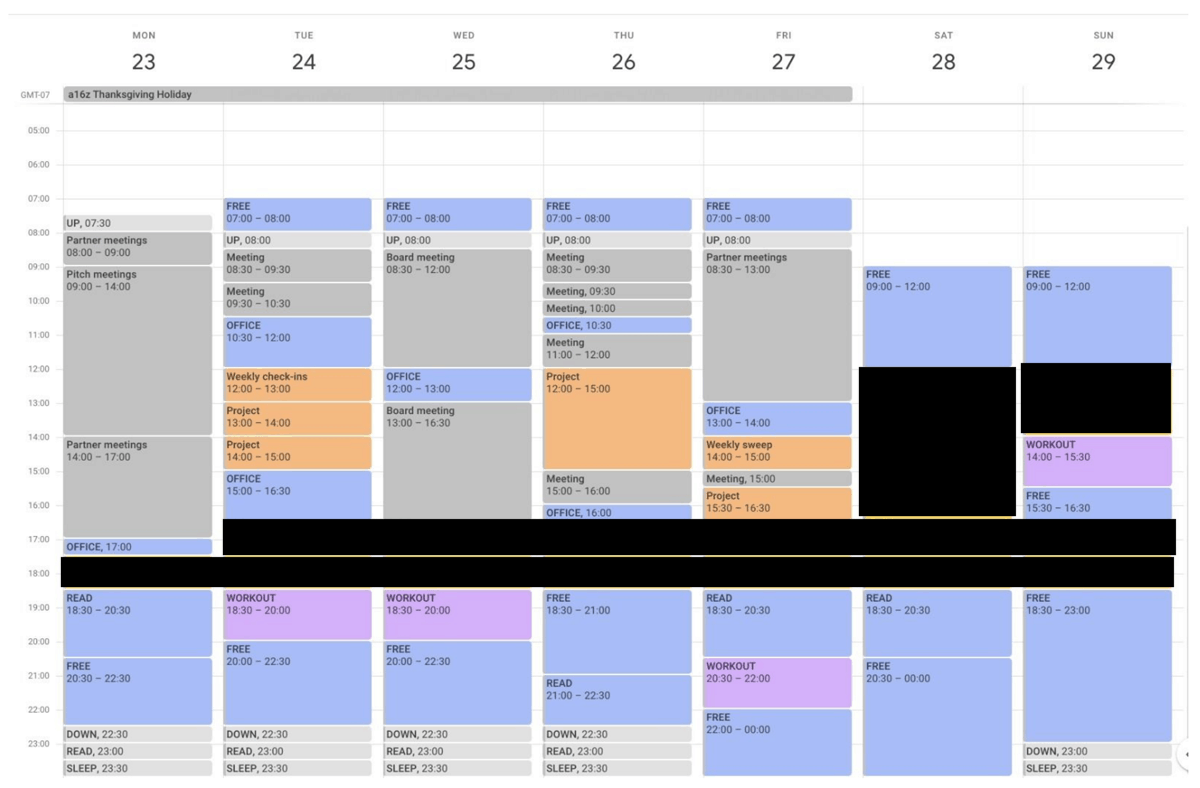
Source: The Observer Effect
In a recent interview, Andreessen said, “I’ve basically done a complete 180 degrees off of the model that I had from 13-14 years ago … The typical day for me right now is quite literally following the calendar very closely. I’m trying to have as ‘programmed’ a day as I possibly can.”
Welcome to the schedule builder club, Marc!
Andreessen has no lack of money, but he has the same 24 hours in a day that you and I have. He’s realized keeping a schedule makes it possible to devote his precious hours to the things that matter most to him. (Note: see my other articles on time management.)
Andreessen deserves credit for publicly upgrading his life operating system. We can all upgrade our life operating systems and learn better ways of getting more out of our day. And fortunately, this upgrade is free.
P.S. Curious about timeboxing? Check out my video below on how to create a timeboxed weekly schedule.
Related Articles
- Schedule Maker: a Google Sheet to Plan Your Week
- Habit Tracker Template in Google Sheets
- The Ultimate Core Values List: Your Guide to Personal Growth
- Timeboxing: Why It Works and How to Get Started in 2024
- An Illustrated Guide to the 4 Types of Liars
- Hyperbolic Discounting: Why You Make Terrible Life Choices
- Happiness Hack: This One Ritual Made Me Much Happier
